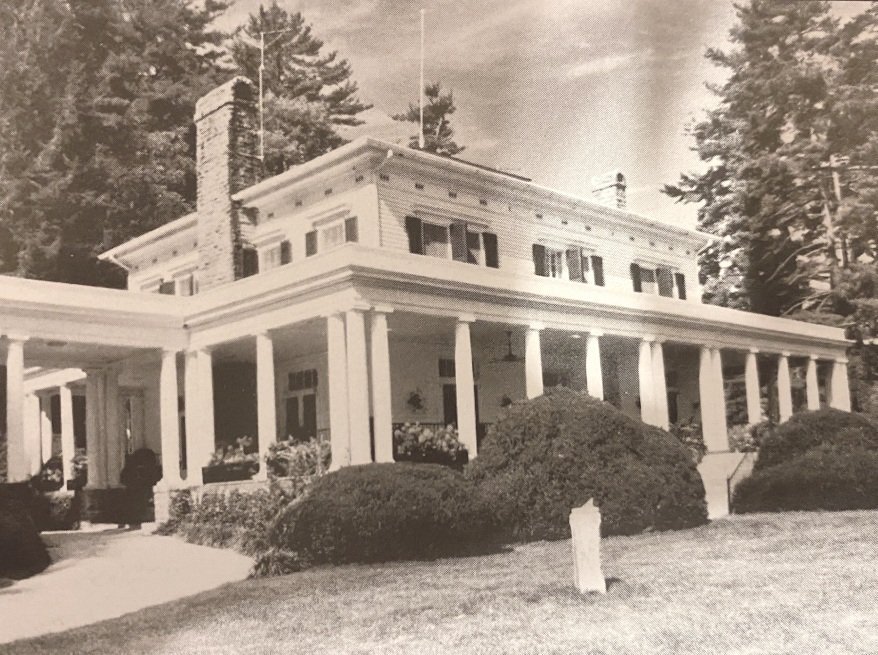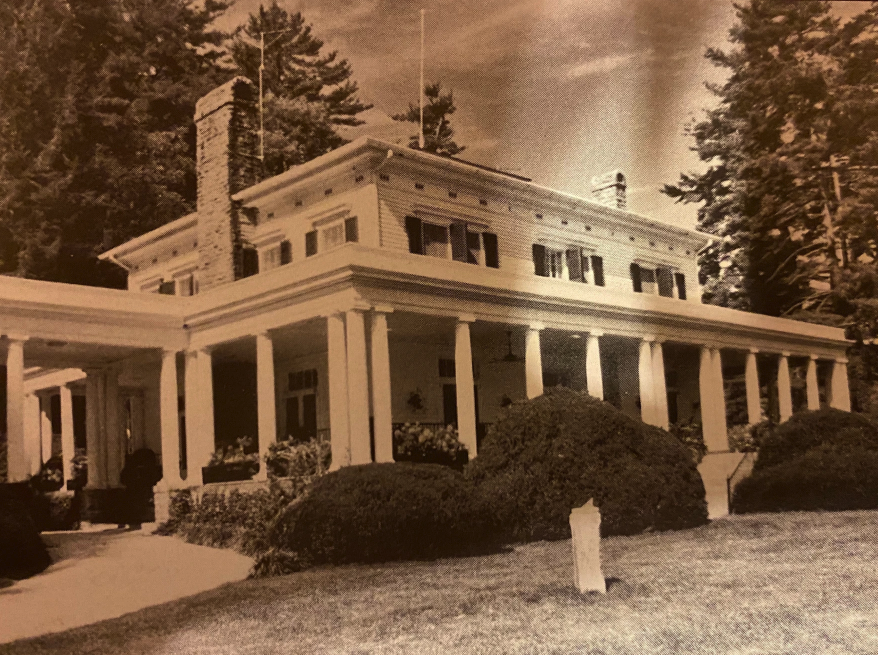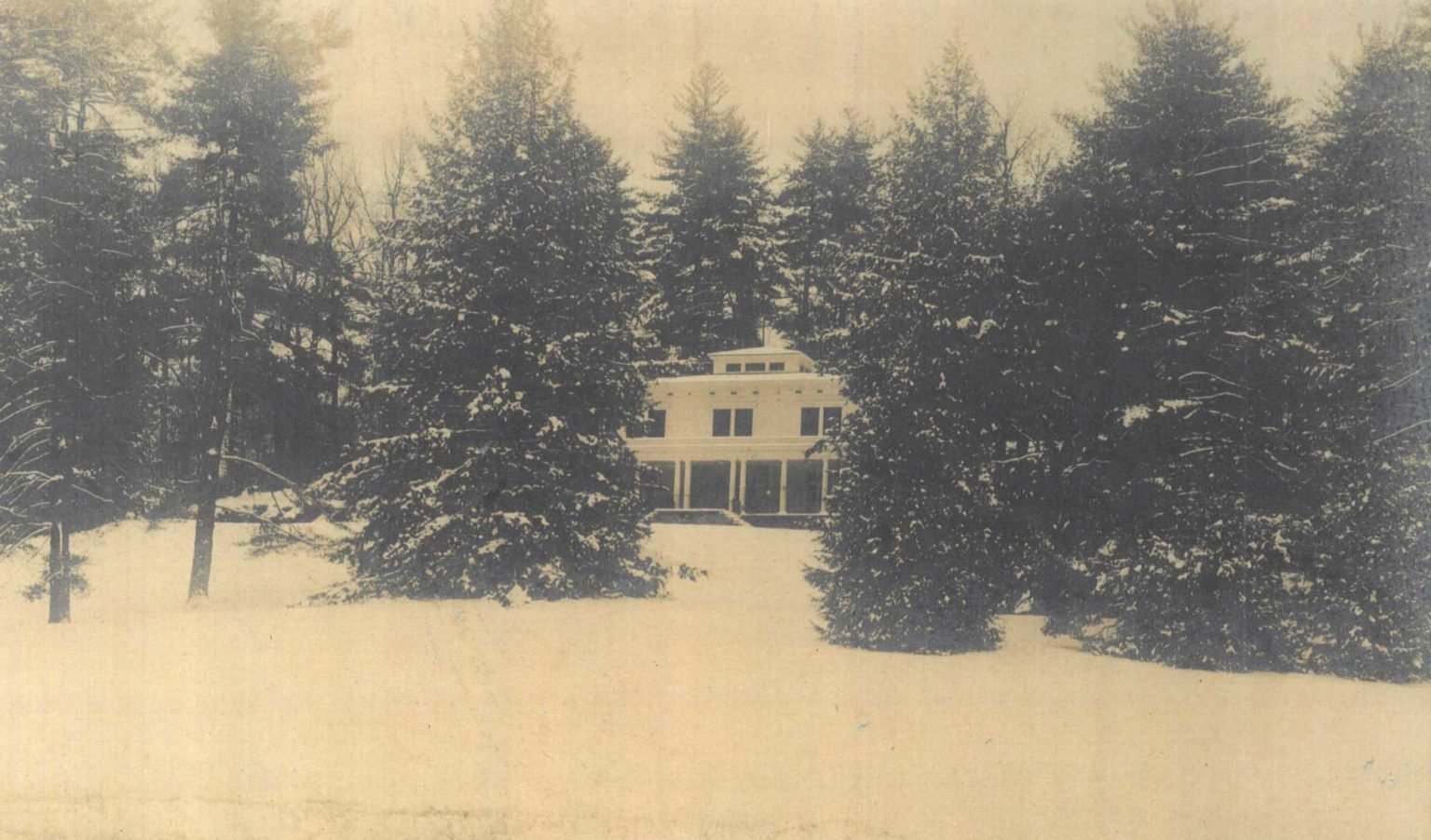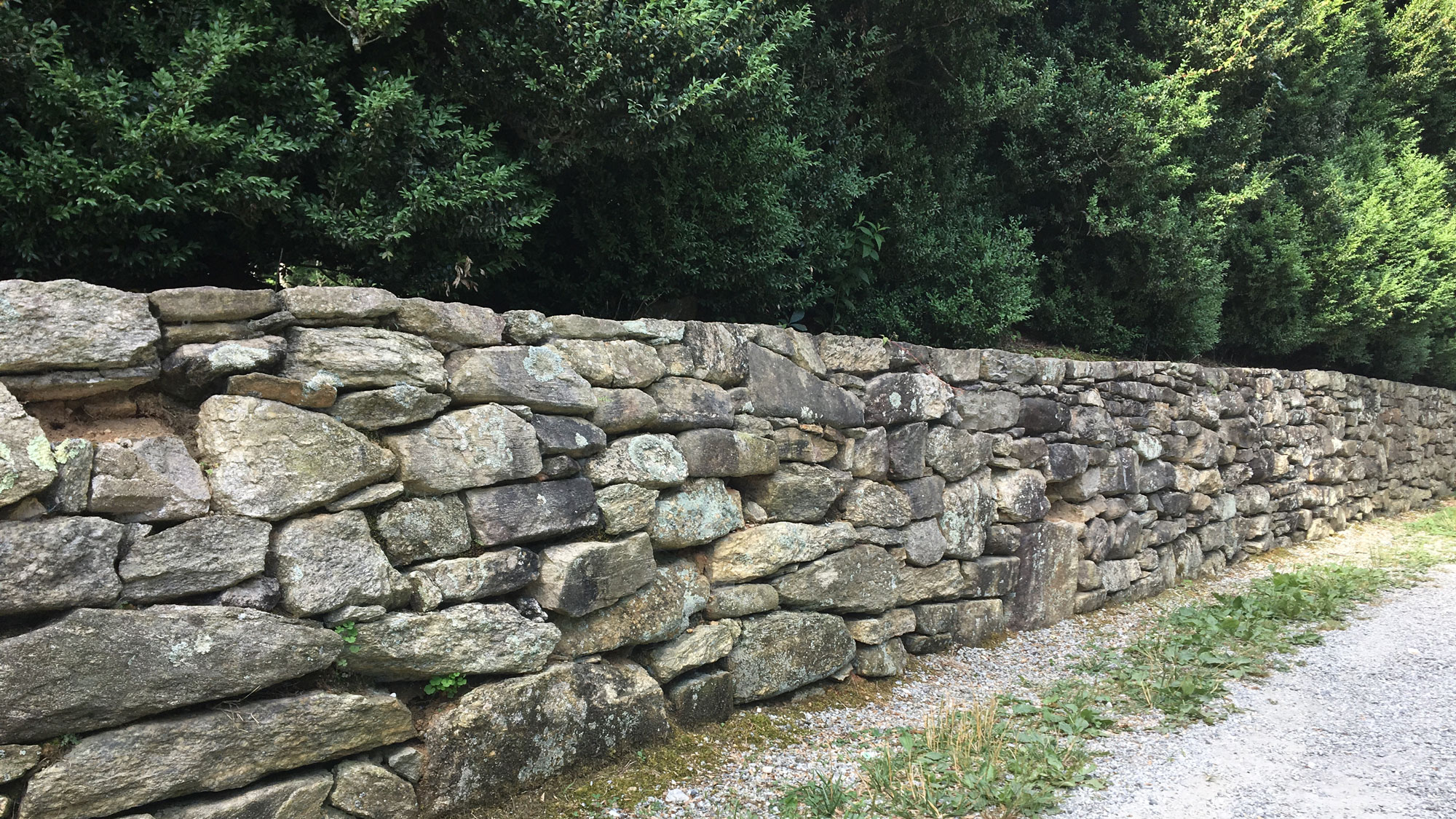Flat Rock’s Kenmure: Glenroy and the King Family
/The following was excerpted from an article written by Missy Schenck for the Charleston Mercury. You can read the entire article with additional information about Rutledge Cottage, once part of the Glenroy Estate, and personal recollections of those who lived at Kenmure and Rutledge Cottage before it became Kenmure County Club at this link.
In 1836, Dr. Mitchell Campbell King, the son of Susanna Campbell and Judge Mitchell King, a founder of the Flat Rock summer colony and builder of Argyle, purchased 293 acres from his father for 25 cents an acre to build his family estate, Glenroy. He hired Mr. Freeman, a Scottish architect and shipbuilder from Charleston, to design the house constructed of lumber harvested on the place and cured for three to four years.
Kenmure
Considered at one time to be the most beautiful home in western North Carolina and now a private country club and gated community called Kenmure, the Glenroy Estate was steeped in Flat Rock history.
Situated on an elevated site with commanding views, the core of Glenroy is a two-story double-pile Greek Revival structure. Built by local mountain craftsmen, there were 23 buildings on the estate, including Dr. King’s office — a handsome old rock building behind the main house. Surrounded by beautiful mountain vistas, Glenroy’s original mile-long entrance curved through pleasant meadows, across a brook and by formal boxwood gardens enhanced by venerable pines and hemlocks.
Dr. King and his wife built a smaller cottage on the property to occupy during the years of Glenroy’s construction. Designed in a German country style and completed in 1840, the Kings lived in “The Cottage” until Glenroy was finished around 1850. The Cottage and adjacent kitchen house were then placed on logs and pulled by oxen a mile down the hill to their present site.
Dr. Mitchell Campbell King
In 1857, The Cottage land was separated from Glenroy and purchased for $4,000 by Frederick Rutledge of Hampton Plantation for his daughter, Elizabeth Pinckney Rutledge. She called The Cottage “Forest Hill” and, along with her sister Sarah, she enjoyed this dwelling for more than 50 years. In 1908, Elizabeth Rutledge gave the house to her niece, Alice Rutledge Felder. I.K. Heyward purchased it and 50 acres known as the Forest Hill Tract in 1917 and renamed it Heyward House. Today, it is known as Rutledge Cottage for the two Rutledge sisters and has been owned by the Schenck family for more than 55 years.
Born in Charleston in 1815, Mitchell Campbell King studied medicine at the Charleston Medical College and at Gottingen University in Germany where he became close friends with fellow student Otto Von Bismark. The two corresponded for years and letters and photographs of Bismark, highly prized by Dr. King’s descendants, are now kept in The Library of Congress.
Dr. King married Elizabeth Laura Middleton of Charleston and they had 11 children. He grew up spending summers in Flat Rock and eventually moved there year-round to begin a medical practice lasting more than sixty years. A well-loved physician, King traveled throughout the mountains to care for the sick and attend to the poor from whom no compensation was ever expected.
An excerpt from Louise Howe Bailey’s “A Short History of Flat Rock” references the far-reaching influence of Dr. King’s medical practice on the evolution of Flat Rock
After graduation from the Medical College of South Carolina, King had sought further study in Germany, where he became friends with a fellow student Otto von Bismarck. At Glenroy Dr. King built an office behind the house and there carried on his medical practice. When an epidemic of yellow fever struck the Jacksonville, Florida, area in the 1880s, Dr. King, realizing the disease did not occur at higher elevations, urged the Florida doctors to send convalescent patients to an infirmary he set up for them in Hendersonville. Thus the Hendersonville area became known to Florida residents, and a thriving tourist business has resulted.
Following King’s death, Glenroy was transferred to his sister, Susan Campbell King, according to the terms of an 1882 agreement. Miss King almost immediately sold the house to Dr. King’s daughter, Henrietta King Bryan.
Kenmure and the McCabe family
In 1920, Gordon McCabe II, a cotton broker of 50 South Battery in Charleston, purchased the Glenroy estate from Henrietta King Bryan and changed the name to Kenmure, after the Scottish home of the Gordon clan. McCabe acquired the house and the original 293 acres along with additional lands totaling 1,007 acres.
Galen Reuther wrote about the transition to McCabe for the Kenmure Newcomers newsletter:
Beautiful Glenroy, built by Dr. Mitchell King and his wife Elizabeth Middleton, who’s family created Middleton Gardens in Charleston, only became more noticeably lovely with age. Inherited by the King’s daughter, Mrs. Henrietta Bryan, it was eventually sold in 1924 to William Gordon McCabe Sr., a direct descendant of George Taylor, a signer of the Declaration of Independence. The estate was still intact on approximately 1,400 acres with 23 outbuildings, with the exception of Rutledge Cottage, which had been sold.
The first alterations to the house were completed in the 1920s, including the addition of Adamesque mantels throughout the house and the attached one-story wraparound porch. The porch is carried on fluted columns and has a dentil cornice. The McCabes built a porte-cochère on the southeast side of the house. They also built a complex of barns for their family cattle operation. “My favorite part about Kenmure was the magnificent lake my grandfather built in the 1920s,” says Mary McCabe Dudley. “The water was like velvet and swimming across it was a daily ritual. There was a designated time each day when the lake was available for friends in Flat Rock to swim. It was a big part of growing up there.”
Mr. and Mrs. McCabe soon stamped their imprint on the majestic estate:
Mrs. McCabe was an avid gardener and Gordon McCabe loved to farm the estate, keeping a beautiful herd of cattle in the barns and pasture, about where the fitness center is now located, and riding horses on what is now part of the golf course. They changed the name to Kenmure, after Kenmure Castle in Scotland, home of the Gordon Clan.
They also added the beautiful wide front porch that instantly became the most popular place to entertain. When Dr. King built the estate, he brought in English gardeners to plant the bones of the landscaping. Trees were planted in groups to frame mountain views, boxwood gardens were begun, and a gracious flow of plantings installed. The McCabes extended and nourished the gardens, planting dogwood and azalea around a walking path around their spring-fed lake. This lake, which we still so admire, became a focal point for Flat Rock’s young people, who came to swim in the cool, clear water with the McCabe children. - Galen Reuther
William Gordan McCabe, Jr., director of J.P. Stevens Textile Co., inherited the Kenmure property from his father and bought out his brother’s interest in the estate. He continued the maintenance of the land, gardens and cattle operation with the help of caretakers, Lindy and Ralph Camp, along with Reggie Fitzsimmons. Every day after work at the Stevens’ mill in Tuxedo, McCabe would go to Kenmure to get the hay in before it rained and to spray the poison ivy. He would check on the cattle and other farm animals, talk with the Camps and head home to Greenville, S.C. for the night. In the summer when the family was in residence at Kenmure, he grew bunched beans on the mountains and his wife, Lydia, had a revered dahlia garden. McCabe retired at the age of 65 from J.P. Stevens and went to work as one of the organizers of the New York Cotton Exchange.
William Gordan McCabe, Jr., died in 1978. His wife, Lydia, knew she would not be able to keep up the land and cattle farm and the estate was sold to real estate developers, Vincent and Giuli Romeo. The main house was converted into a private clubhouse and the grounds divided into residential building sites. A golf course designed by Joseph E. Lee now encompasses the rolling hills of the front acreage and the field once coveted as a favorite dove hunting grounds. By the early 1980s, the club and development were failing and William Robinson bought the property in 1985 and formed Kenmure Properties Ltd. to manage it.
Other renovations to the clubhouse included a 1987 two-story addition connecting it with a formerly detached kitchen dwelling and The Grill Room, a split-level alteration later built onto this addition. In 1995, the porte-cochère was removed and The Charleston Room, a substantial one-story wing with similar finishes as the main house, was added. A larger, new porte-cochère was erected on the northeast elevation.
Today the 1,400 acres of Kenmure are embedded with new and existing homes all in keeping with the historic character and integrity of the estate.
Missy Craver Izard Schenck was born and raised in Charleston, South Carolina. She resides in Flat Rock, North Carolina, and is the current President of Historic Flat Rock, Inc. as well as a regular contributor to the Charleston Mercury where this article was originally published.
https://kenmurenewcomers.wildapricot.org/page-539355, Galen Reuther










